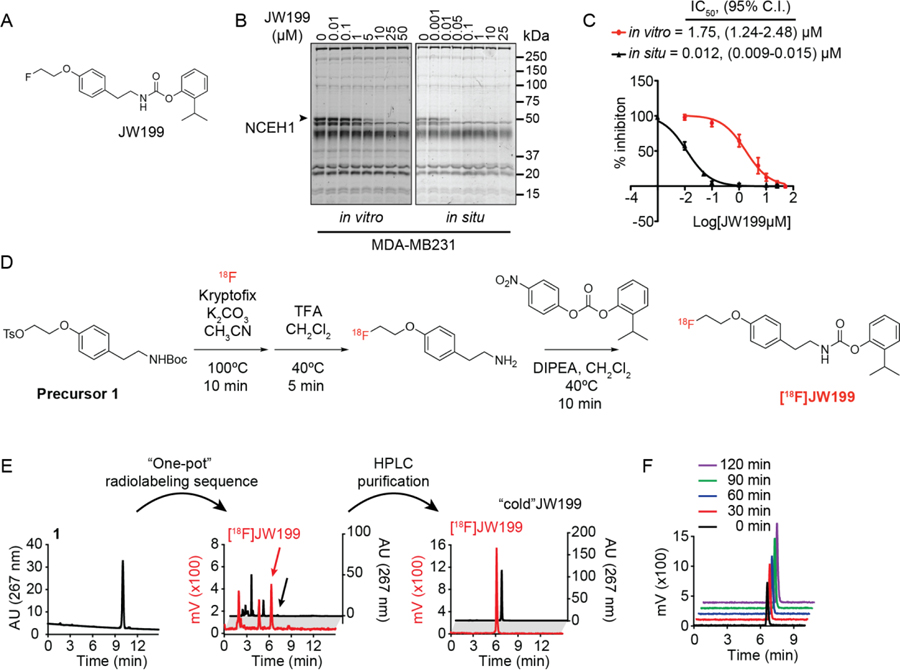Figure 1.
JW199 is a potent and specific inhibitor of NCEH1. A. Chemical structure of JW199. B. Gel-based profiling of active serine hydrolases in breast MDA-MB231 cells (membrane fraction) treated with JW199 in vitro (left) and in situ (right). Bands mark active serine hydrolases labeled fluorophosphonate-rhodamine. C. Quantitation of JW199-dependent NCEH1 inhibition in MDA-MB231 cells in vitro (red) and in situ (black). Data shown represent the mean and 95% confidence interval (95% C.I.) from n = 3 biological replicates. D. Radiosynthesis of [18F]JW199. E. Absorbance (black) and crude radioactivity (red) chromatograms of pure TsO-JW199 starting material (1, left), 18F-labeled, crude JW199 (middle), and purified [18F]JW199 (right). Arrowheads indicate peaks corresponding to the [18F]JW199 radiosynthetic product. F. Stability of [18F]JW199 in phosphate buffered saline containing 10% ethanol over time, as measured by radioactive HPLC.

